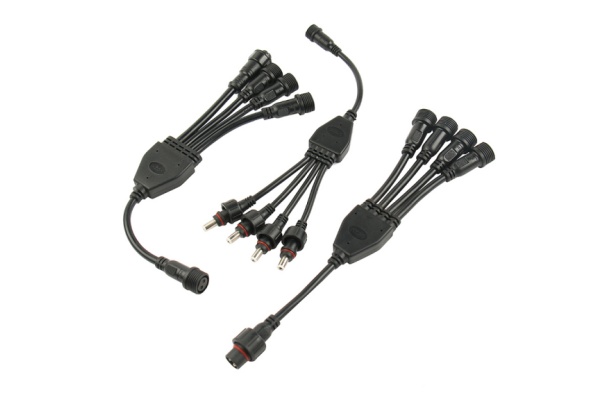News


News

Transforming Industrial Sensor Networks: The Strategic Advantage of 1to4 m12 3 pin connector Systems
Release time:2025-08-27
viewed:235
Modern manufacturing facilities face a constant challenge: how to connect growing numbers of sensors while controlling installation and maintenance costs. Traditional point-to-point wiring methods, where each sensor gets its own dedicated cable run to the control cabinet, create complex wiring infrastructures that become difficult to manage as operations expand. The emergence of the 1to4 m12 3 pin connector addresses this challenge directly, offering a smarter approach to industrial sensor connectivity.

Industrial environments typically deploy multiple sensors in close proximity along production lines, on machinery, or within process areas. The conventional method requires separate cables for each device, resulting in excessive conduit use, crowded cable trays, and significant installation labor. This approach not only increases initial costs but also creates maintenance challenges throughout the system's lifecycle. The 1to4 m12 3 pin connector changes this dynamic by enabling a single cable run to serve four separate sensors, fundamentally changing how technicians design and implement sensor networks.
The installation benefits become immediately apparent when using the 1to4 m12 3 pin connector. Instead of pulling four separate cables through conduit and cable trays, installers run one primary cable to a strategic location near a sensor cluster. From this distribution point, shorter cable lengths connect to individual sensors. This approach reduces cable consumption by approximately 60-70% for typical sensor clusters, while simultaneously cutting installation time by similar margins.
Cost analysis reveals compelling advantages for the 1to4 m12 3 pin connector system. A traditional four-sensor installation requires four complete cable runs, including separate conduit paths, additional cable tray space, and four individual control cabinet entries. Each connection point demands termination time at both ends, plus testing and documentation for each circuit. The alternative system eliminates three of these cable runs, replacing them with shorter branch connections that require minimal additional infrastructure.
Material savings extend beyond just cable reduction. The smaller cable bundles require less conduit space, smaller cable trays, and reduced cabinet real estate. These compound savings significantly impact overall project costs, particularly in new installations where infrastructure scaling is possible from the initial design phase. The system enables more efficient use of available space while maintaining full functionality.
Maintenance operations benefit substantially from the organized approach. Troubleshooting becomes more straightforward when sensors are connected through clearly organized distribution points. Technicians can quickly isolate issues to specific branches rather than tracing individual cables back to distant control panels. This organizational clarity reduces repair time and simplifies system modifications when production layouts change.
The robust design ensures reliability in challenging industrial environments. These components maintain standard protection ratings, providing resistance to dust, moisture, and chemical exposure. The mechanical integrity of the connection system prevents accidental disconnections while allowing for necessary maintenance access when required.
System scalability improves dramatically with this architecture. Expansion projects become more manageable, as new sensors can be integrated into existing distribution points rather than requiring completely new cable runs. This flexibility future-proofs industrial installations, allowing operations to adapt to changing production requirements without major rewiring projects.
Implementation planning requires careful consideration of sensor placement and grouping. Optimal results come from identifying natural sensor clusters within the production environment and positioning distribution points to minimize branch cable lengths. This planning phase represents a small investment that yields substantial returns throughout the system lifecycle.
The technology represents more than just a component change—it enables a fundamental shift in how industrial sensor networks are designed and implemented. By reducing complexity while maintaining reliability, this approach delivers both immediate cost savings and long-term operational benefits. As industrial operations continue to add sensing capabilities for automation and data collection, such solutions will play an increasingly important role in making these systems practical and cost-effective to deploy and maintain.
Manufacturing operations considering system upgrades or new installations should evaluate this approach as part of their overall automation strategy. The combination of reduced installation costs, improved maintainability, and enhanced scalability makes a compelling case for this method in virtually any industrial setting requiring multiple sensor connections.